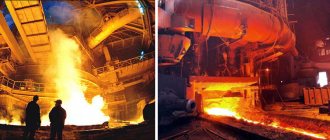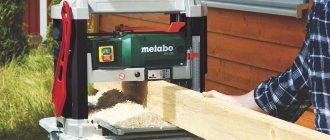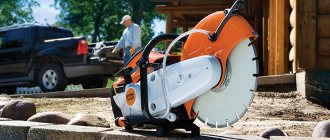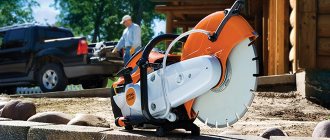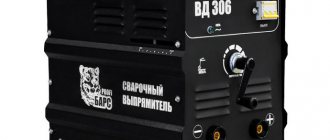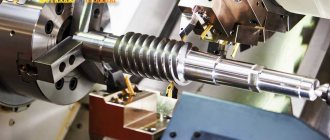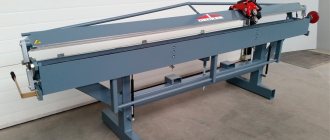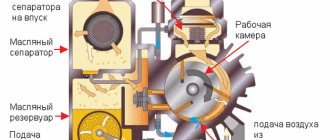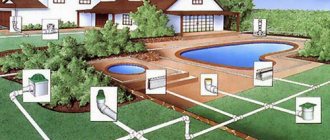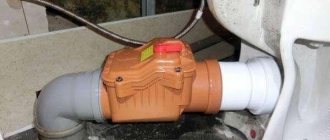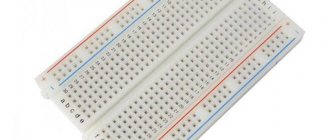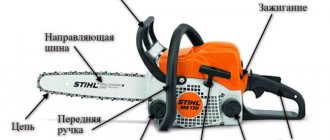The gas burner and electric hair dryer are rarely used in the household. This is explained by the complexity of their design and operating principle. The blowtorch is widely used in everyday life due to its fast heating and low price. When purchasing a device, you need to know its types and principles of use.
What is a blowtorch?
This device is a device that heats up as a result of the combustion of the original substance. In the evaporator it turns into a gas. The soldering lamp is refilled with gasoline, alcohol, kerosene or gas. The volume of the tank ranges from 0.1 to 2 l, the thermal power can be 0.5-3 kW. The heating device was invented by Karl Rickard Nuremberg in 1881 in Sweden and quickly became widespread.
Blowtorch device
The heating device consists of two main parts: a burner and a fuel tank. The first part of the blowtorch is attached to the top of the tank with the substance, which is covered with a lid with a seal. Such simple equipment ensures easy maintenance and operation of the device. How a blowtorch works can be judged by its standard composition:
- An ejector, which is a heating part and a continuation of the evaporator.
- Handle for convenient use and movement of the device.
- The fuel reservoir, which is the largest part of the device. The openings in the tank must be hermetically sealed.
- A pump with a valve system, which is designed to pump high pressure into the fuel tank.
- An evaporator that ensures the transition of fuel into a gaseous state.
- A needle valve that regulates the amount of fuel.
- Siphon tube for supplying fuel from the tank to the evaporator.
- Protective stand for blowtorch.
- A nozzle, which is located at the end of the tube and serves to direct the gas flow to the ejector through the evaporator.
Operating principle of a blowtorch
The effect of the heating device is the draft, which appears due to the design of the device. How a blowtorch works can be judged by its operating principle:
- The device begins to operate by manually starting the pump, which leads to the injection of excess pressure.
- It is directed into the blowtorch and causes the fuel to move towards the injector.
- The fuel passes through a tube, which is washed by the flame from the burner.
- The supplied fuel heats up and then evaporates.
Design of a gasoline blowtorch
In the design of a gasoline blowtorch, there are two main structural parts - a tank for storing fuel reserves and a burner.
An ejector is a device in which kinetic energy is transferred from one medium moving at a higher speed to another.
The burner is called an ejector. The ejector has a design that promotes the flow of air and decaying combustion products during the combustion process. The operating principle of this device is based on creating thrust due to fuel combustion.
A supply of fuel is poured into the tank, after which it is closed with a tight lid with a seal. The lid with a seal prevents fuel leakage during storage of the device, as well as during its operation. The tank for storing a supply of gasoline is equipped with a pumping device that allows air to be pumped into the tank to create excess pressure in it. Excess pressure contributes to the transportation of gasoline from the tank to the burner during operation of the device.
A typical device contains the following structural elements:
- fuel tank;
- handle for holding the device during operation;
- hermetically sealed fuel filler neck;
- pump with valve - to create excess pressure in the tank;
- siphon tube providing fuel supply to the evaporator;
- a needle valve used to regulate the fuel supply;
- evaporator;
- nozzle;
- ejector;
- nozzle cleaning device.
The fuel filled into the device tank is a consumable item. The smokiness of the flame and the clogging of the nozzle depend on the quality of the fuel used; in addition, the degree of explosion hazard that occurs during the use of the device depends on the quality of the fuel. For normal operation of gasoline devices, it is necessary to use special gasoline or gasoline with an octane rating of at least 80. If low-quality fuel is used, the device may require repairs.
What is a blowtorch used for?
The use of this device is limited by strict adherence to safety regulations, the operating temperature of the device and its thermal output. Why you need a blowtorch can be judged by the areas of application of the device in the household:
- heating of various parts and components;
- solder melting;
- welding of materials at low temperatures;
- carrying out disinfestation activities;
- tarring carcasses, burning bristles;
- heating frozen water pipes;
- lighting a fire, fireplace, coals;
- dismantling rusty connections of cast iron or steel pipes.
Scope of application of a blowtorch
A few decades ago, such a device was used if it was necessary to heat any surface or metal. This product was very often used in production, since they simply could not find any analogue for it. A blowtorch is used when it is necessary to produce heating in the absence of an alternative source of thermal energy or in the complete absence of modern technology.
In most cases, such a device is used:
- If it is not possible to use an electric soldering iron during operation, the device helps to very quickly heat up both the drive and the tip in the soldering iron.
- If you need to weld metal workpieces at a melting temperature below 1 thousand degrees Celsius.
- If necessary, melt a metal with a melting point of less than 900 degrees.
- The tool is used when it is necessary to remove the varnish coating from the surface of a metal item.
- While the car engine is warming up.
Sometimes the lamp is used to significantly loosen bolted and some other connections during dismantling of structures if the connections are heavily rusted. In addition, such a device is also used in agriculture during the slaughter of livestock to resin the animal’s skin.
Types of blowtorches
The wide variety of heating devices is associated with a wide range of their applications. A mini blowtorch is used in jewelry making and repair. The devices have also found their use in large industries. In addition to size, there are different types of devices based on the type of fuel used:
- gasoline;
- kerosene;
- alcohol;
- gas.
Gasoline blowtorch
An apparatus operating on liquid fuel consists of a reservoir and a burner. In the fuel tank, gasoline is compressed to several atmospheres and partially mixed with air. For long-term operation of such models, it is important to know what gasoline to fill the blowtorch with. Poor quality fuel leads to frequent clogging of injectors. The characteristic features of a gasoline blowtorch are:
- large selection of models;
- different volumes of tanks;
- heavy weight of devices;
- regular cleaning of the device after use;
- easy operation;
- affordable price.
Kerosene blowtorch
The design of this type of heating devices is similar to gasoline devices. Their differences lie in the diameter of the nozzle through which the kerosene flows. Lamps using this type of fuel are used to heat large soldering irons or melt hard types of solder. In addition, they are equipped with a screw, which is needed when adjusting the flame. The duration of operation depends on what is poured into the blowtorch. Other features of kerosene models:
- high combustion temperature;
- heavy weight of the device;
- small selection of models;
- low cost;
- high fuel consumption.
Alcohol blowtorch
This type of instrument is rare nowadays. This is explained by the fact that an alcohol blowtorch has a small area of application. It is suitable for high-precision soldering when repairing jewelry, antennas and radio devices. The features of alcohol structures are:
- small area of application;
- complex operation and subsequent maintenance;
- high fuel consumption.
Gas blowtorch
This type of liquefied propane or butane is small in size. It is used as portable burners. Gas cylinders are sold separately. The connectors for connecting the device to the tanks are always unified, so there are no difficulties with what to refill the blowtorch with. The cylinders are easily connected to different models of burners. Features of gas appliances are:
- wide selection of devices;
- light weight;
- convenient use in small spaces;
- long service life.
The best gas blowtorches
Portable gas blowtorches have a simple, reliable design. The main component is a gearbox with a nozzle. A liquefied gas cylinder is connected to this nozzle. A mixture of butane and propane is in a container under pressure. The burner can be transported disassembled. Our experts analyzed 8 models, studied reviews of blowtorches, tested the equipment in operation and chose 3 tools.
Wester PL04
Professional blowtorch designed for construction and installation work. Used for soldering copper and bronze pipes due to its high power - 1900 W. The flame temperature can reach 1850 degrees. The gearbox provides smooth power adjustment, which expands the range of applications.
The compact burner weighs 0.54 kg. Powered by gas cylinders with butane or propane. The durable metal case protects the cylinder connection point and the gas container from accidental damage. The ergonomic handle is made of impact-resistant plastic. It is recommended to use cylinders with a capacity of 0.42 l, the flow rate does not exceed 140 g/hour. Saving time at refueling increases productivity.
Advantages:
- Piezo ignition makes ignition simple and convenient in any weather;
- Quick and reliable fixation of the cylinder;
- Compact architecture makes it easy to work in tight spaces;
- Manufacturer's warranty – 5 years.
Flaws:
- Not detected.
The burner operates at high temperatures, which places special demands on the nozzle. This unit is made of brass that is resistant to high temperatures. The alloy is not subject to corrosion, which simplifies maintenance and guarantees the reliability of the equipment throughout its entire service life.
Kemper micro 10500
Italian gas micro-soldering iron designed for tinning and soldering. It has miniature dimensions, which allows it to be used in work where high precision is required. Weight without a filled tank is 46 g. The cylinder holds 6 grams of gas; the instrument can operate at this volume for up to 40 minutes. Refilling is carried out using branded Kemper 10051 cartridges.
The micro-soldering iron is equipped with a bronze nozzle with a diameter of 8 mm. The tank is made of aluminum, the filling and control valves are made of corrosion-resistant bronze. The operating temperature of the flame is 1200 degrees, the maximum is 1500 ºС. Ignition - in the traditional way using matches or a lighter.
Advantages:
- Thoughtful ergonomics;
- Refueling within 6-10 seconds;
- Economical fuel consumption;
- Can be refilled with lighter gas.
Flaws:
- No piezo ignition.
Topex 44E140
A blowtorch with impeccable ergonomics, which makes it convenient for long-term work on a construction site. The fuel source is 190 g gas cartridges. The power is 1900 W, which allows you to quickly defrost pipes and oil in the engine crankcase. Flame temperature – 1350 degrees. The power regulator helps you choose the optimal mode for fusing waterproofing, soldering with tin or removing old paint. Average gas consumption is 180 g/hour.
The container for the gas cartridge increased the weight of the instrument to 600 g, but provided protection for the cylinder from mechanical damage. The nozzle is made of brass, which guarantees resistance to corrosion and high temperatures.
Advantages:
- Comfortable handle;
- Screw-on container;
- Compact dimensions;
- Good build quality.
Flaws:
- Lack of piezo ignition;
- It is difficult to find branded cartridges.
How to choose a blowtorch?
A large selection of heating devices makes it difficult to purchase them. The following criteria may influence the choice of a blowtorch:
- Apparatus design
. Mostly on the market there are models with a solid body. However, some devices are equipped with a special hose up to 1.5 m long. This design is convenient for working while suspended. - Igniting the flame
. Options for blowtorches with liquid fuel take much longer to prepare for use, so if frequent use is necessary, it will be more convenient to opt for a gas device with piezo ignition. - Fuel
. A gasoline blowtorch is refueled at a gas station and produces a high-temperature flame. Gas models will be more expensive to provide with fuel, and sometimes fuel must be purchased in cylinders. - Volume of the tank
. To operate gasoline blowtorches for an hour, you must choose a model with a tank capacity of one liter or more. - Maintenance and operation
. This is an important indicator, because during use it will be necessary to clean the nozzle and flush the fuel tank from sediment. In this regard, blowtorches with a completely disassembled design are more convenient. Any type of product is designed to operate for 5 years.
Blowtorch rating
A wide range of heating devices makes it possible to choose models that meet all the necessary requirements of the future owner. Among the best blowtorches are:
- SIBRTECH 91442
. This is a reliable and high-quality device at a low price. The lamp is used on gasoline of various brands, except leaded. The tank capacity is about 1.5 liters, but you don’t need to fill it completely. The device consumes fuel economically, so one refill is enough for an hour of use. The model's steel handle has a comfortable design. Among the advantages, users note the ease of adjusting the fuel supply, but the disadvantages include frequent clogging of the nozzle. It has to be cleaned after each use.
- BARS 91452
. This model of blowtorch heats up quickly and has a stable flame, so you can work with it in windy weather. A significant drawback of the device is the clogging of the nozzle, but its structural arrangement helps to quickly clean it. The thick metal case is designed for long service life. The device is intended for repair work, soldering and heat treatment of various parts.
- DREMEL VERSAFLAME 2200-4
. Experts consider this model to be the best among gas blowtorches. Interesting appearance and wide range of applications make the device popular. This small blowtorch has a small reservoir that lasts for 75 minutes of intensive use. The kit includes several types of attachments designed for soldering and torch extension. The only drawback is the high price of the device.
Lamp Specifications
A blowtorch is considered to be quite a useful device in any household. Tool models that are produced in Russia have different technical characteristics and different fuel consumption rates. There are several parameters that describe such devices. In order to make the right choice of the desired tool model, you should carefully study the technical parameters of the product. The main parameters for all devices will be the following:
- Capacity in the fuel tank.
- Optimal indicator of maximum filling of the tank with fuel.
- The maximum permissible pressure during operation of the device.
- Fuel consumption.
- Overall diameter of the device.
- Weight of the device not filled with fuel.
- Guarantees from the manufacturer.
- Operating time of the device.
The technical performance of a device determines its popularity among users. The most widely known devices are those that have a tank volume of about two liters. On such models there is a maximum filling indicator in the region of 1.5 to 1.8 liters, the maximum pressure value during operation of the device is 0.3 MPa. Fuel consumption reaches 1.2 liters per hour.
How to use a blowtorch?
The devices are a fire hazard, so strict precautions must be taken. You can understand how to set up a blowtorch by following the algorithm of actions:
- Fill the tank with fuel no more than 3/4 of the tank volume.
- Obtain pressure after 6–10 smooth manual pressures.
- Pour fuel into the bath: gasoline or ethyl alcohol, which does not leave soot when burned.
- Light the fuel to initially preheat the evaporator.
- Open the shut-off needle after combustion and adjust the flame size.
- Stop the blowtorch by extinguishing it. To do this you need to close the needle.
- Cool the device, then open the reservoir to release the pressure.
Blowtorch Operating Instructions
Before using the device, you must read the instructions on how to use a blowtorch. You can use this device only after you have read the instructions.
The device can only be used outdoors. If there is an urgent need to use the device in a closed space, it can be used for a short time, followed by high-quality ventilation.
When using the device, you must strictly follow the operating instructions.
Failure to follow safety precautions when working with a blowtorch can lead to its explosion and other dire consequences.
- Before starting work, the device is refueled if necessary. The tank should be filled to three-quarters of its volume. An empty volume is required to create pressure during operation.
- Excessive pressure must be created in the tank using a pressure pump built into the device. To create pressure, you will need to perform up to 10 gentle pumping motions.
- After obtaining increased pressure, you need to pour fuel into the burner bath. It is best to use alcohol for this purpose, since this fuel does not produce a large amount of soot. The fuel poured into the bath is ignited to ensure initial heating of the burner evaporator. During the combustion of fuel in the bath, it is necessary to protect the device from drafts.
- After combustion of the fuel poured into the bath stops, the needle valve is opened. The fuel coming from the evaporator must be gaseous - if droplets are detected in the fuel flow, the procedure for heating the burner evaporator should be repeated.
- After receiving a jet of gaseous fuel, it is ignited. If necessary, the volume of incoming fuel can be adjusted using a needle valve. To speed up the process of complete heating of the burner, you can place the lamp against a metal sheet, and the distance from the sheet to the burner nozzle should be 2-3 cm.
- When carrying out work, monitor the state of the torch - you can increase or decrease it using a needle shut-off valve.
- If there is instability in the operation of the burner or combustion damping occurs, it is necessary to clean the nozzle with a needle specially designed for this purpose.
- After completion of work, the device torch is extinguished. Extinguishing the torch of the device is carried out by screwing the valve and lowering the needle. After the lamp has cooled, the air is bled from the tank.
When working with the tool, precautions should be taken.
http:
What is the frequency of checking blowtorches?
A heating device is a source of increased danger that requires compliance with certain rules during use:
- Do not use low octane gasoline.
- Stop working with the device if there is a leak, the fuel tank is overheated or in an unventilated area.
- Do not refuel the device during its operation or immediately after use.
In addition, the frequency of checking the parameters of blowtorches is important:
- To ensure the integrity of the liquid fuel supply systems, the unit must be inspected at least once a year.
- To check the tightness and tightness of the connection, inspect the device monthly.
- To ensure a stable flame of the torch, the body of the heating structure is tested after each use.
Rating of the best blowtorches
| Photo | Name | Rating | Price | |||
| The best gas blowtorches | ||||||
| #1 | DREMEL VERSAFLAME 2200-4 | ⭐ 99 / 100 | Find out the price | |||
| #2 | KEMPER 1060 pz | ⭐ 97 / 100 1 — vote | Find out the price | |||
| #3 | EXPRESS 8700 | ⭐ 95 / 100 | Find out the price | |||
| #4 | WESTER GG02 | ⭐ 95 / 100 | Find out the price | |||
| #5 | STAYER MASTER 55590 | ⭐ 94 / 100 3 — votes | Find out the price | |||
| The best gasoline and kerosene blowtorches | ||||||
| #1 | Sibrteh 2.0 L 91444 | ⭐ 99 / 100 1 — vote | Find out the price | |||
| #2 | SIBRTECH 91442 | ⭐ 97 / 100 | Find out the price | |||
| #3 | BARS 91452 | ⭐ 97 / 100 1 — vote | Find out the price | |||
| #4 | Leopard MIR-91451 | ⭐ 96 / 100 | Find out the price | |||
| #5 | SPARTA 91443 | ⭐ 95 / 100 1 — vote | Find out the price | |||
| #6 | BISON "PROFESSIONAL" | ⭐ 95 / 100 3 — votes | Find out the price | |||
| #7 | BISON 40652-2.0_z02 | ⭐ 94 / 100 | Find out the price | |||
| #8 | Bison Samotlor SM-15 | ⭐ 92 / 100 2 — votes | Find out the price | |||
| #9 | STURM 5015-01-15 | ⭐ 92 / 100 | Find out the price | |||
| #10 | Caliber LP-1.0 | ⭐ 91 / 100 | Find out the price | |||
Which blowtorch would you choose or would you recommend?
Take the survey
How to clean a blowtorch?
The burner of the heating device requires regular maintenance. Otherwise, working with a blowtorch will be difficult. The accumulation of dirt occurs due to the use of low-quality fuel. Impurities begin to accumulate, combining with combustion products. You can clean a blowtorch in different ways:
- The device comes with a special needle for processing the hole. If there is none, then the jet can be cleaned with thin wire.
- If there is a need to wash the soldering device, treat it with a special aerosol solution or gasoline. Some craftsmen clean the device with a cloth moistened with white spirit. It is important to saturate the rags completely so that the product can cope with all contaminants.
How to use a blowtorch
Using a blowtorch requires taking into account many nuances of the work. You need to fill the following immediately: you need to fill the tank about ¾ of the total volume of the tank. Example: the tank volume is 1.5 liters, then you need to fill it to about 1.1 liters. This is done to avoid accidents related to tool tanks.
Before starting the device, you need to check everything. For example, the adjusting screw must be checked - it must be tightly closed. Then you need to check what kind of fuel was filled - according to the instructions or not. Afterwards, make sure that there is increased pressure inside the accessory, because the more air is pumped, the more difficult it will be for the pump rod to move.
With a half-filled 1 liter tank, you need to pump the pump about 60 times. It happens that it is more or less - the features of the soldering device play a role here. The main thing is that if the rod moves hard, but after removing the hand it moves on its own, then there is no need to pump it up - you can start working.
Important! If the pump is slow to move, it is removed and the cuff is lubricated with grease.
You must act as carefully as possible if you do not want to get burned. When about 75% of the fuel has burned out, the propeller opens slightly. It is better to start using it in a minute or two.
Interesting! A blowtorch can be used in a field kitchen if you have a tripod.
Let's consider the basic safety rules when working with such a tool:
- do not open the lamp during operation;
- Do not pour fuel into a heated tank - you need to wait until the tank cools down;
- try not to use a blowtorch in a closed room - only if there is no other way, and you should work for a short time, after which you ventilate the room;
- constantly monitor the condition of the torch and its direction so as not to touch flammable objects;
- when the lamp cools down, bleed off all the air;
- clean the lamp everywhere.
Important! Do not operate a lamp that shows signs of fuel leakage.
To ensure a longer service life of the blowtorch, the user should reduce the amount of time he or she operates the torch. Monitoring the temperature of the cylinder will also be useful, since when the cylinder reaches a temperature of 50 degrees or higher, it will need to be cooled quickly.
Important! Under no circumstances should you smoke near the lamp. If she is ready to work, even more so.
Do not inflate the fuel tank with air beyond normal limits - this is very dangerous for human life. If flammable materials within a five-meter radius are not removed, they can either be covered with steel screens or water can be spilled. A fire extinguisher or a box of sand for extinguishing is placed near the grill.
Important! It is better to work inside a well after checking for the presence of explosive gases in the layers of the earth.
There are also these rules:
- The filler plug must be screwed in until it stops;
- disassemble the lamp only when it is empty and cooled down;
- leaking fuel is a reason to stop all work;
- It would be better not to place the device in a place where there is strong heating.
Rules of use should be taken into account
Where is a blowtorch used?
Blowtorches today are no longer as popular as, for example, 10-15 years ago. It’s just that now there are other heating devices, the same industrial hair dryers. But sometimes it happens that it is not possible to use modern technology, so they resort to blowtorches. Here are the areas in which, for example, this device can be used:
- as a warm-up for an electric soldering iron, if there is no electricity, you can heat its tip or solder;
- for welding and melting metal products with a melting point of less than 1000 degrees;
- for removing varnish on metal products
- for defrosting water in frozen metal pipes
- to warm up the car engine
- for singeing the wool of slaughtered cattle
This list is not exhaustive - a blowtorch can also be used for other purposes where high temperatures are needed.
How does a blowtorch work?
There are two main elements in the design of a blowtorch - a tank and a burner, which is also called an ejector.
The ejector is made in such a form that during operation, air moves along with the burning fuel from one end to the other. This is achieved by creating thermal draft.
The tank has a pressure pump in its body. Thanks to it, pressure is created inside the tank, which pushes the fuel poured into it out into the burner. To ensure that the pressure does not go anywhere, and that the fuel does not leak out, the neck of the tank is closed with a lid with a seal.
In addition to the above elements, the blowtorch also has other parts:
- handle for holding the lamp during operation;
- evaporator;
- a tube supplying gasoline to the evaporator;
- nozzle;
- cup for fuel to heat the burner.
For a blowtorch, just like for a car, you need high-quality gasoline. Therefore, buy it at trusted gas stations. The octane number is better to be higher - from 92. If the fuel is of poor quality, this can lead to clogging of the injector - you will have to clean it later.
How does a blowtorch work?
The filled fuel is supplied to the burner by opening the appropriate tap. The movement of gasoline is ensured by the pressure created in advance in the tank using a pump. Gasoline is supplied to the burner in the form of gas. In order to produce exactly gas, and not drops of gasoline, the burner must be preheated. To do this, there is a special cup under it, into which the same gasoline or alcohol is poured, which, of course, must be set on fire. After burning the full volume of gasoline or alcohol that fits in this cup, the burner warms up to the desired temperature - now you can supply fuel to it and ignite it.
The gaseous state is achieved by an evaporator located in the burner. When it is heated, the fuel entering it evaporates and is then fed into the combustion chamber through a nozzle. The combustion process is maintained by drawing air through the back of the burner through the thermal draft that occurs due to the combustion of fuel.
Under no circumstances should the supply valve be opened during the burner heating procedure. Only after complete heating can it be opened. After igniting the fuel, the same tap can be used to adjust the flame power. To stop working, you just need to close the tap.
Main technical indicators of blowtorches
To choose the right blowtorch, you need to know what technical characteristics to pay attention to. The important points here will be:
- fuel tank volume
- the maximum amount of fuel that can be filled into the tank
- maximum tank pressure
- tank dimensions
- fuel consumption
- total weight of the device
- warranty and service life
To be able to work longer on one gas station, it is better to purchase a blowtorch with a large tank - 2 liters. The only exception is the case when small dimensions of the lamp are required if it is necessary to work in a limited space. Then the tank will be small.
Given that the tank has a certain volume, the amount of fuel poured into it will be less than this volume by about a quarter. This is due to the need to leave space for compressed air, which will squeeze out the fuel.
The pressure in the tank should not exceed 0.3 MPa (3 atm.). And fuel consumption depends on the maximum thermal power, but is usually 1-1.2 l/hour.
The weight of these devices does not exceed 2 kg without fuel. If you fill with gasoline, the weight will be about 3 kg for models with a 2-liter tank.
The warranty is usually given for one year, and the total service life is stated at 5 years. But you shouldn’t get too hung up on the last parameter - in fact, blowtorches last much longer in household use.
